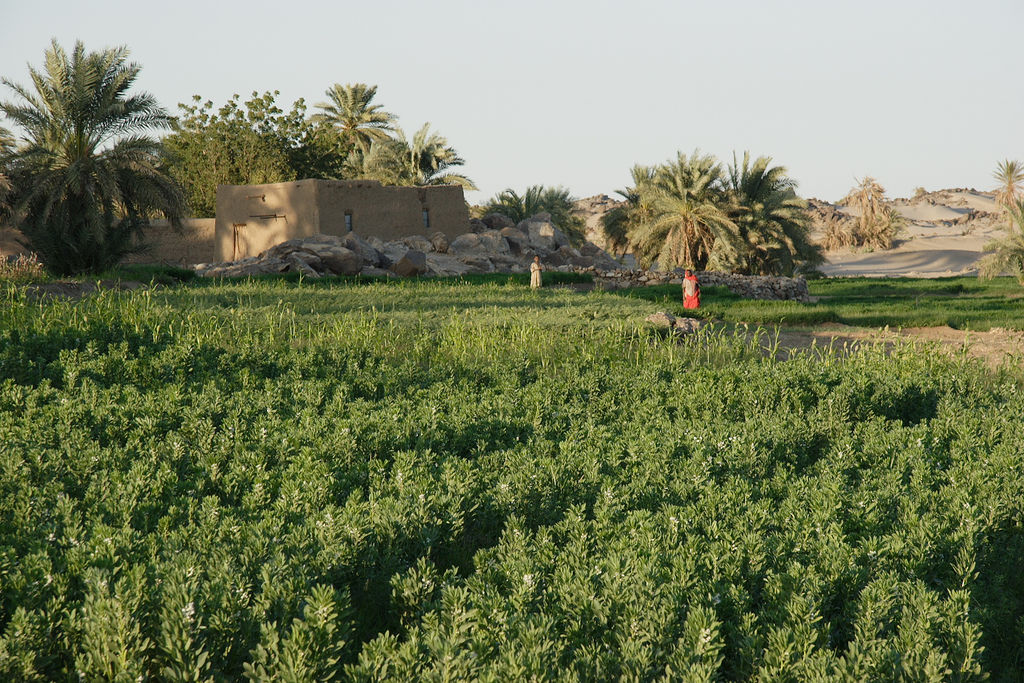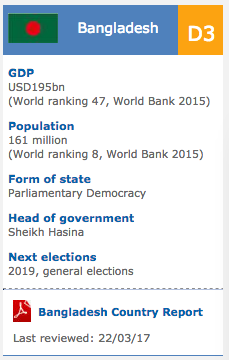Sudan: Sudan Agriculture Profile
2012/04/04
Above-average cereal production expected in eastern and central major cropping areas
Harvesting of the 2014 sorghum and millet crops has started in October and is expected to continue until the end of the year. Rains have been generally favourable; an early start in June with abundant cumulative amounts and good spatial and temporal distribution. In addition, better access to credit and high food price levels induced farmers in major eastern and central cropping areas to increase plantings.
By contrast, despite the favourable rains, average to below-average output is expected in conflict-affected areas of Darfur, South Kordofan and Blue Nile where insecurity limited all cultivation operations along the season, from planting to harvesting, and localized floods at the end of July affected standing crops.
Accordingly, cereal production in 2014 (inclunding the small irrigated wheat crop to be harvested in March 2015) is tentatively estimate at over 5.1 million tonnes, well above last year’s drought-affected output and almost 30 % additional than the last five-year average. Cereal import requirements in the 2014/15 marketing time(November/October) are estimate at an average 2.5 million tonnes, mainly to cover the increasing domestic request for wheat and wheat flour in urban areas. Some surplus of sorghum would likely be available for exports. Additional details about crop production, trade requirements and markets will be provided by a Government-led crop and food supply assessment planned to start from mid-November and its results expected in early January.
Good pasture conditions across the country
Average to above-average pasture conditions prevail inclunding in northern parts of the country that received beneficial unseasonal rains in October. Pockets of well below-average pasture conditions are only reported in coastal areas of Red Sea national.
Sorghum and millet prices still at record high levels in most markets
In October, despite the start of the major 2014 harvest, prices of sorghum were at near record to record high levels in most markets. In Khartoum, sorghum prices remained firm between August and October at a record SSP 370 per 90 kg bag, almost double the levels of the previous year. Prices of millet declined in September and October in some markets due to the availability of early maturing varieties for consumption, but they are currently still up to additional than twice their levels of October 2013. The exceptionally high prices of locally-produced coarse grains are essentially due to the early depletion of stocks from the poor 2013/14 harvest, higher transport costs following the partial removal of fuel price subsidies at the end of 2013 and increased informal exports to South Sudan. In addition, conflict in Darfur and South Kordofan states inclunding heavy rains since July disrupted trade flows, exerting addition upward pressure on cereal prices.
Prices of wheat, largely imported, are on the increase since mid-2012 in the capital Khartoum and, next a temporary decline in March 2014 at harvesting time, the upward trend resumed in April. In October, wheat in Khartoum was traded at a near record SSP 420 per 90 kg bag, over 50 % higher than 12 months before, while in conflict-affected areas of Al Fashir (North Darfur), wheat prices were over three times their levels in October 2013. Strong local request, high prices of other cereals and the devaluation of the domestic currency have underpinned wheat price increases.
Food security improved since the end of the lean season in October
Countrywide, the lean season is over and food security conditions have improved since the beginning of green crop consumption in October. Currently, the number of people in need of food assistance is estimated at 3.5 million people (IPC Phases 2 and 3), over 30 % less than the peak registered in September. Most food insecure people are IDPs in Darfur, South Kordofan and Blue Nile states. In general, food security conditions are expected to improve further until early next year, as the newly harvested crops will increasingly supply local markets, reducing most vulnerable households’ dependence on markets. However, persistent insecurity is expected to continue limiting humanitarian access in most areas controlled by SPLM-N in South Kordofan national.
The ongoing conflict in South Sudan continues to have a significant impact on food security in the Sudan. As oil production in South Sudan fell by about 35 % since December 2013, the export fees collected for the use of the pipeline and port facilities in Port Sudan dropped dramatically with consequent reduction in Sudan’s national revenue and availability of foreign exchange. In addition, by early November 2014, over 106 100 South Sudanese refugees arrived in the Sudan and they are in need of humanitarian assistance in terms of food, shelter and basic services.
- Sudan News
-
- AFGHANISTAN: UNWTO: International tourism – strongest half-year results since 2010
- BOTSWANA: Why governments need to support the financial sector to meet the unserved needs of smallholder farmers
- BOTSWANA: International Arrivals To Africa Reach More Than 18 Million In 2017
- BOTSWANA: Africa: USA-Africa - No Policy? Bad Policy? or Both?
- BOTSWANA: Africa: U.S. State Department To Get Experienced Diplomat in Key Africa Post
- BOTSWANA: Africa’s economic growth in 2016 was driven by East Africa
- Trending Articles
-
- CHINA: China welcomes Guinea to take part in Belt and Road Initiative
- CAMEROON: Poor End of Year Results for Cameroon Students
- AUSTRALIA: Queensland Bauxite Gains State Approval of Mineral Development Work Program
- CHINA: Chinese-supported infrastructure projects change Zambia's landscape
- UNITED STATES: Spotify, Hulu target students with discounted bundle
- UGANDA: Ugandan Govt Starts Verifying International Academy Teachers







.gif?1356023993)


